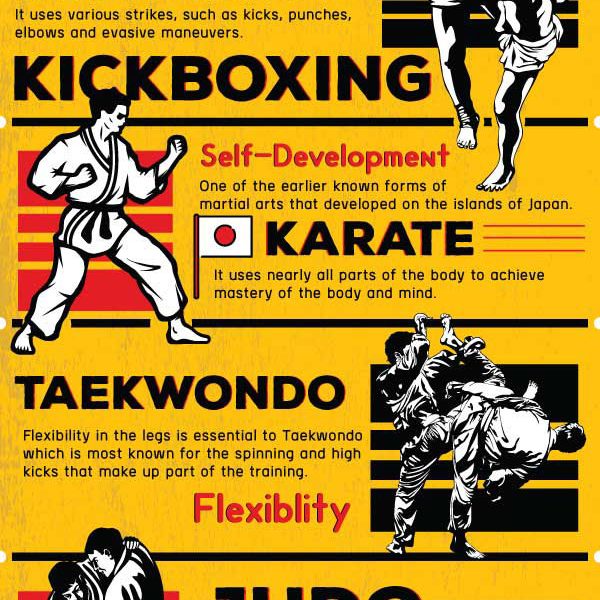The Growth And Development Of Martial Arts: Tracing Its Roots From Ancient Times To Contemporary Practices
The Growth And Development Of Martial Arts: Tracing Its Roots From Ancient Times To Contemporary Practices
Blog Article
Post Composed By-Delaney Ayers
Enter the globe of martial arts, where ancient beginnings and modern-day methods clash in an exciting journey of technique and self-discovery.
As you look into the background and development of this exciting art form, prepare to be mesmerized by the cultural influences, technical developments, and extensive viewpoint that have actually shaped it over centuries.
From the combat zones of old people to the training grounds these days, martial arts have stood the test of time, regularly adjusting and expanding.
Each strike, each movement, carries with it the weight of numerous years of practice and wisdom, gave via generations. This is a tale of durability, of warriors that sought not just physical prowess, yet also self-confidence and consistency.
Join us on this amazing exploration as we uncover the keys, the tales, and the transformational power of martial arts.
Prepare to be inspired, challenged, and forever altered by the history and advancement of martial arts.
Cultural Influences on Martial Arts
As you check out the background and advancement of martial arts, you'll quickly find the remarkable methods which cultural impacts have shaped these combat methods.
From the ancient civilizations of China and India to the more recent advancements in Japan and Brazil, martial arts have actually been greatly affected by the cultures in which they stemmed.
As an example, Chinese martial arts, such as Martial Art and Tai Chi, are deeply rooted in the viewpoint of Taoism and the concept of Yin and Yang.
On the other hand, Japanese martial arts, like Martial arts and Judo, reflect the samurai warrior practices and the values of technique and honor.
In https://www.washingtonpost.com/dc-md-va/2022/06/13/solitary-confinement-andrew-johnson-san-jose-jail/ , Brazilian fighting style, Capoeira, combines aspects of African dancing and songs, reflecting the cultural heritage of African slaves in Brazil.
These social affects not only provide each martial art its unique attributes yet also provide a much deeper understanding of the historical and social contexts in which they developed.
Technical Improvements and Martial Arts
With the rise of innovative weapons and cutting-edge training tools, you have actually had the ability to enhance your abilities and adjust to the ever-changing battle landscape.
Technological developments have actually revolutionized the way martial arts are practiced and shown. lawyers for misdemeanors near me allow you to train in reasonable battle situations without the threat of physical injury. High-speed cameras record every step, enabling you to assess and ideal your methods. https://facts-about-criminal-defe22110.win-blog.com/10370800/important-standards-to-consider-in-the-process-of-selecting-a-criminal-justice-lawyer check your heart rate, breathing, and muscle mass activation, offering immediate feedback on your efficiency.
Furthermore, the growth of specialized equipment, such as resistance bands and agility ladders, has actually enabled you to enhance your rate, toughness, and agility. These technological improvements have not only made training extra efficient yet have additionally pushed the borders of what is possible in martial arts, permitting you to reach brand-new heights in your technique.
The Philosophy and Concepts of Martial Arts
The ideology and principles of martial arts are deeply rooted fit your way of thinking and instilling technique, emphasis, and regard in your method.
1. Attitude: Martial Arts teaches you to create a solid and durable state of mind. It allows you to overcome difficulties both on and off the mat, pushing your restrictions and standing firm despite misfortune.
2. Self-control: Martial Arts needs technique and self-control. With routine training and adherence to stringent policies and strategies, you find out to control your impulses and create a solid work ethic.
3. Emphasis: Martial Arts calls for intense emphasis and focus. By training your mind to be present in the minute, you enhance your capability to respond swiftly and successfully throughout fight scenarios.
4. Respect: Martial Arts emphasizes regard for oneself, teachers, educating partners, and challengers. It educates you to value the skills and experiences of others, cultivating a sense of sociability and gamesmanship.
Conclusion
Congratulations on finishing your trip through the exciting globe of martial arts! Throughout this exploration, you have experienced the abundant history and exceptional development of these fight methods.
From their old origins to the contemporary strategies we see today, martial arts have been shaped by social impacts.
The assimilation of innovation has actually additionally played a considerable function in changing the means martial arts are instructed and exercised in today day.
Nonetheless, it is very important to keep in mind that martial arts are greater than just physical combat. https://riverfkpuz.creacionblog.com/30131303/look-into-the-authentic-experience-of-engaging-with-a-criminal-defense-lawyer-in-court-reveal-the-fact-and-prepared-on-your-own-for-the-unanticipated-challenges encompass profound philosophies and assisting concepts that surpass the mere act of fighting.
Take a moment to assess this anachronistic adventure and value how the heritage of martial arts remains to thrive in the present, going beyond time and boundaries.
